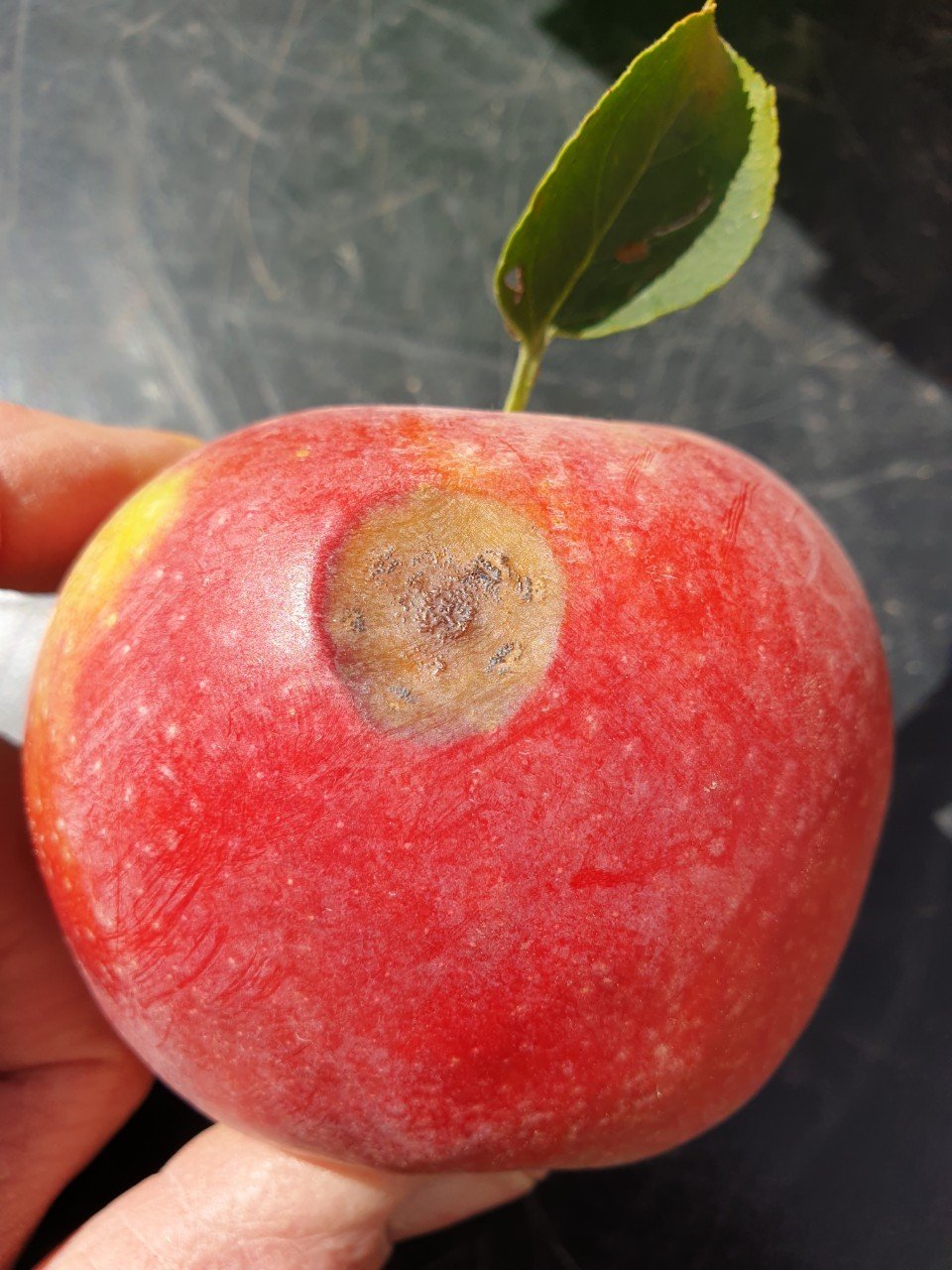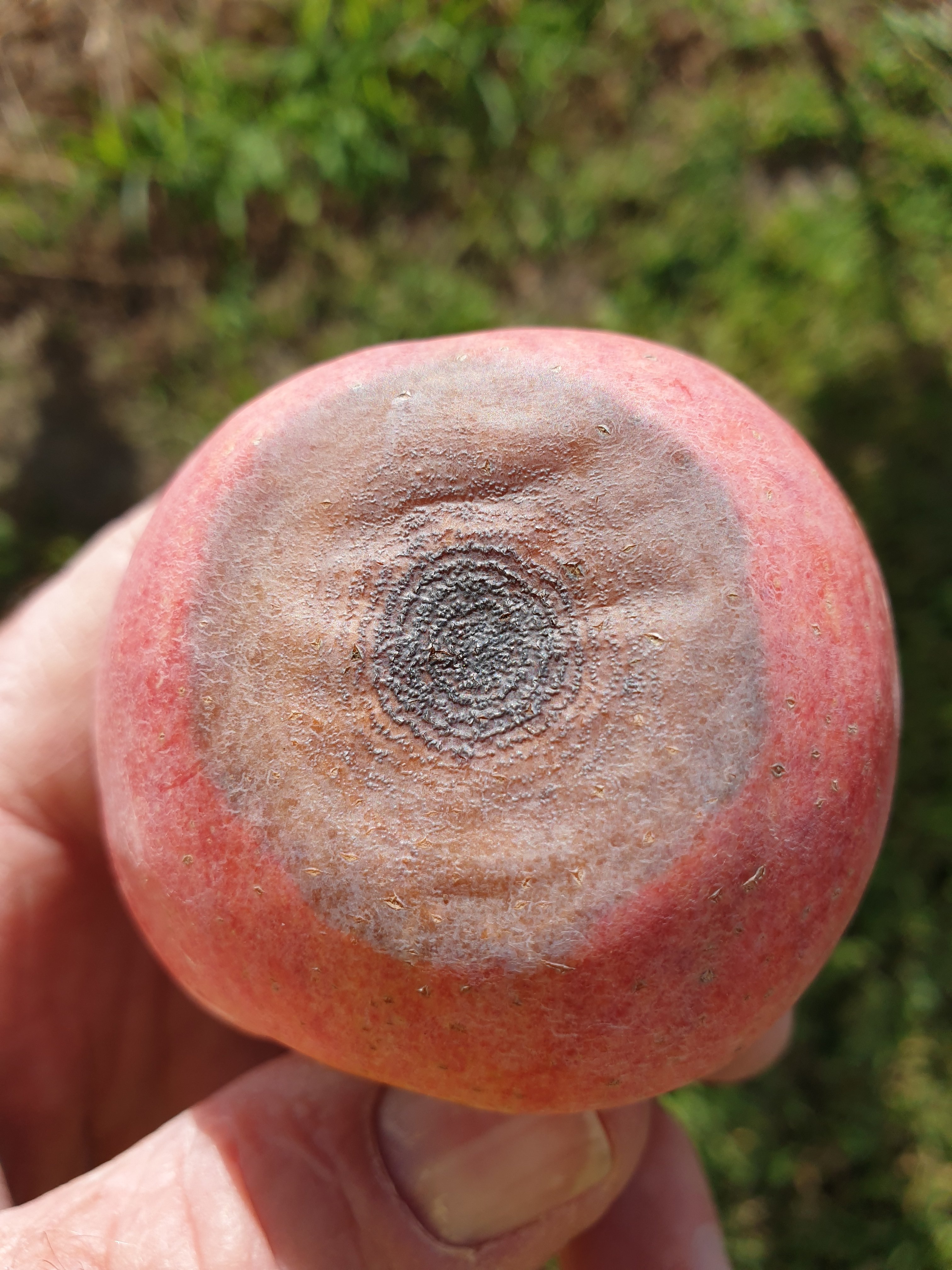Bitter Rot (Glomerella) is a disease mostly only found in apples and symptoms mostly develop as the fruit approaches maturity. The rot starts as small light brown circular spots that rapidly enlarge to form saucer shaped depressions. Under humid conditions gelatinous salmon pink masses of spores may be produced on the surface of the fully developed lesions. These spore masses are sometimes arranged in concentric circles (see Figure 2 below)
The disease is active in warm wet weather. It will only become a problem when summer temperatures and humidity are high. The first fruit infections will occur usually in early summer when temperatures above 21 degrees C are likely to occur during night or at night when the fruit is wet. Spores landing on fruit may germinate within a few hours, provided the surface of the fruit remains wet and the temperature exceeds 21 degrees C .
Orchard hygiene is important, trees should be examined regularly, infected fruit should be removed out of the orchard.
In winter remove all ‘mummies’ which failed to set but are still attached to trees. In areas where Bitter Rot occurs most of these will be infected.
References: Orchard Pest & Disease Handbook 2000/2002 Deciduous Fruit Australia Inc.

Figure 1. Small Bitter Rot (Glomerella) lesions (Photo: A. McWaters, QLD DAF)

Figure 2. Mature Bitter Rot lesion with concentric rings of spores (Photo: A. McWaters, QLD DAF)
